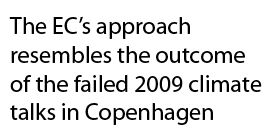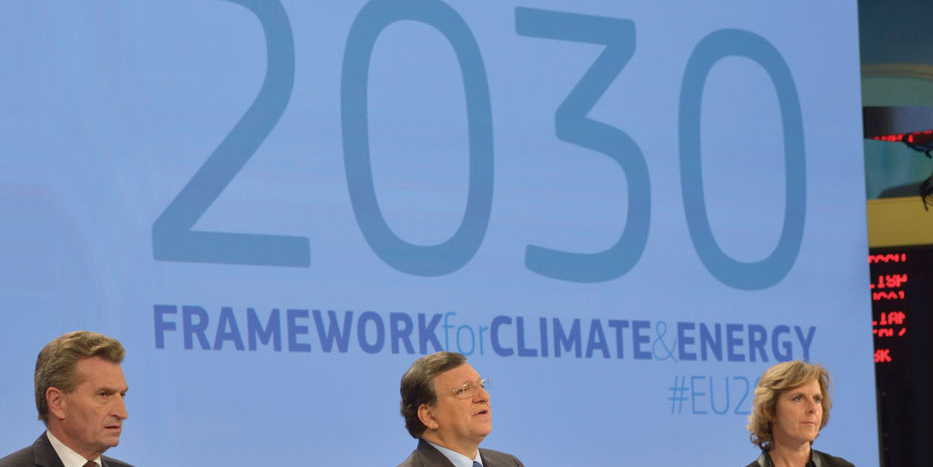The commission has proposed a 40% reduction in greenhouse gas (GHG) emissions compared to 1990 and a renewables target of “at least 27%”, which would be “binding on the EU” — but not on individual member states.
The commission refers to the GHG target as “the centrepiece of the EU’s energy and climate policy for 2030”. Moreover, it displays its lack of ambition by stating that Europe would reach 27% renewables even without an EU-level target. And had the GHG goal been set at 35%, as suggested by Energy Commissioner Günther Oettinger, the renewables target would have been 25%.
The proposals are incompatible with the EU’s agreed ambition of reducing GHG emissions by 80-95% by 2050. One renewables lobbyist in Brussels refers to the 2030 debate as the “twenty-dirty debate”.
In June 2012, member states agreed with the commission that there are three main planks in developing energy policy up to 2050: a substantially higher share of renewables beyond 2020; increased energy efficiency; and smart and flexible infrastructure. The EC’s package does not come anywhere near adequately reflecting those top priorities from a year ago.
EC president José Manuel Barroso and Climate Action Commissioner Connie Hedegaard insist that a 27% renewables target would send a strong signal to investors, despite the lack of national targets.
But a proposed new governance structure, supposedly aimed at ensuring investor confidence, has already attracted criticism, not least because it is not exclusively targeted at renewables. It would bring nuclear, shale gas, carbon capture and storage (CCS) and other technologies together with renewables under a new “low-carbon framework”. The idea dates back to the EC’s 2011 Low Carbon Economy Roadmap, which established that the power sector must reduce CO2 emissions by 93-99% by 2050 compared with 1990 to reach the lower level of the agreed GHG reductions of 80-95%, but shied away from defining what a low-carbon energy technology is. That definition is now becoming clearer.

The commission’s approach resembles the outcome of the failed 2009 global climate talks in Copenhagen, where countries made explicit emission pledges, without any possibility of enforcement. Ironically, the EC admits that this “bottom-up” approach to GHG reductions has created a “significant ambition gap” between pledges made and the reductions needed to limit global warming to 2°C. It will be difficult for the commission to convince investors that a similar approach to European renewables policy would lead to a better outcome.
The EC is sending three signals. It wants the Emissions Trading Scheme to be the main driver for climate and energy policy after 2020; it will no longer let fragmented national renewables policies remain unco-ordinated at EU level; and it wants to replace the renewables framework with a broader low-carbon framework after 2020.
The European Parliament was quick to ring the alarm bells. It is calling for binding targets for GHG reductions (at least 40%), renewables (at least 30%) and energy efficiency (40%), combined with national targets, while expressing “deep concern” about the proposals for a new governance structure for the 2030 framework.
In theCommission’s view, national targets equal national supportmechanisms. The Commission believes that the absence of national targets will ensure that the renewable energymarkets are “not renationalised by way of state aid,” as was expressed by theCommissioners during their meeting on the morning of the 22 January.
It would therefore be wrong to assume that the commission has given up on its 15-year-old dream of having a harmonised European framework for renewables. One only has to read its guidelines on support mechanisms and its proposal on state aid reform to conclude that it wants to end all European FITs.
This has not yet sent Europe’s renewables industries to the barricades. It will. But only after the targets — whatever they end up being — have been agreed by the 28 states.
Christian Kjær is a former chief executive of the European Wind Energy Association and founder of Faraday Consult. He is also a member of the Recharge board. CK@Faraday-Consult.com

